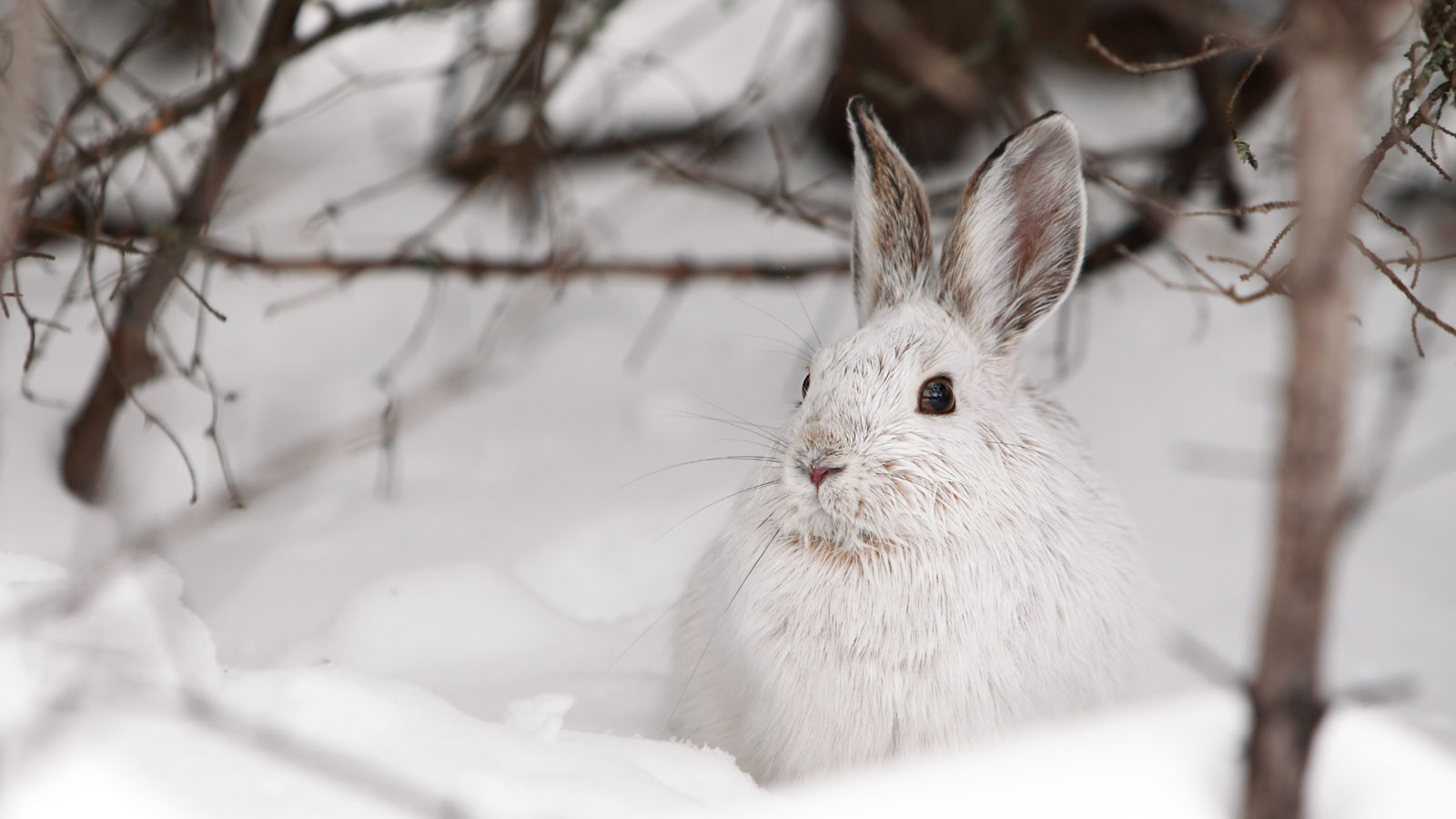Winter Wildlife Watching In Your Backyard And Beyond
Even when your garden is quiet, there's plenty of fun to be had with winter wildlife watching. Find out how to make more of your plot’s nature-spotting potential

The cold months might make you want to snuggle indoors like a hibernating bear, but winter wildlife watching is a great way to reconnect with the outdoors in a gentle, low-key way. While many parts of your garden are resting, there’s still plenty of action to enjoy if you focus on the comings and goings of nature. Winter wildlife is abuzz with activity from birds to large and small mammals – you just need to know where to look.
If you want, you can just look out of your living room window and indulge in some winter bird watching, but there are both mental and physical benefits involved in getting outdoors. If you can walk or hike, you can take advantage of the opportunity to get some exercise. When we view wildlife in their natural setting, we allow ourselves a peek into their lives, which can help us to relax. Wildlife watching is also a great way to stimulate the mind, and it can foster new hobbies such as snowshoeing or photography.
Long-term Benefits of Winter Wildlife Watching
For lovers of wildlife gardens, being able to enjoy wildlife scenes in winter has clear benefits. A study in Scientific Reports found that birdwatching, for example, can improve a person’s feeling of well-being for as long as eight hours after viewing the birds in question.
Birdwatching or other wildlife viewing can also be a social activity, although it is one where you have to be mindful of noise. Too much noise might scare off the animals, so bear this in mind when watching wildlife in winter. Still, if you save your queries and observations, they can be shared with avid watchers later.
Which Wildlife Can You See in Winter?
You might hear about bear hibernation and bird migration in the winter. However, the reality is that many birds and mammals stay put and continue to forage and hunt throughout the winter months. Depending on where you live, and how far you are prepared to venture out, you could see all manner of winter woodland animals, water-based mammals and birds of prey, as well as creatures more often seen in gardens.
Various birds can be viewed on any winter day and aren’t difficult to spot. Their coloring and habitat may render them almost invisible, but they’re there; you just need to know where to look. Eagles, ospreys, cardinals, nuthatches, jays, chickadees, mourning doves, owls, hawks, titmouse, waxwing, goldfinch, herons, grebes, seagulls and even hummingbirds may be spotted if you’re in the right place at the right time.
Mammals also abound during the winter months, but by nature are trickier to spot. While the bears are hibernating, you might spot deer, moose, elk, cougars, foxes, mountain goats, weasels, beavers, squirrels, hares or chipmunks going about their daily lives.
Sign up for the Gardening Know How newsletter today and receive a free copy of our e-book "How to Grow Delicious Tomatoes".
How to Find Wildlife in Winter
When searching for particular animals in the winter, it is a good idea to know about their food sources and habitat. For instance, water birds will likely be found near a lake, stream, inlet, ocean, marsh or other body of water. Other mammals will also be found within their habitat.
If you are going winter wildlife watching with no preconceived notion of what animals you may run into, a safe bet is to find a natural area that’s not big on people or domesticated animals and has a water source. This doesn’t mean you have to hike into the backwoods. Your local park, arboretum or greenspace may have plenty of creatures to observe and identify. Other areas to view local wildlife include a fish hatchery, wetland management district or national wildlife refuge.
Create a Winter Wildlife Habit at Home
You may not be able to leave your home in search of wildlife in winter, but you’d be surprised how much wildlife is in your own backyard. To entice wildlife or better view it, having a wildlife-friendly garden is a plus. This means having an unfrozen water source like a heated bird bath, native plants as food and shelter, plus supplemental food.
If you do use a bird feeder, make sure to keep it clean. There are some bird diseases that can easily get passed around through unsanitary feeders. Also, keep the feeder at least 30ft (9m) away from your home, and close to vegetation that birds can use as protection from predators.
Prepare to Watch Wildlife in Winter
When you’re watching wildlife in winter, make sure you’re prepared for every eventuality. If you’re staying at home and viewing the animals through the windows of a warm house, a set of binoculars is likely all you will need. However, if you’re hiking or snowshoeing into a natural area, extra supplies and layers are essential.
Carry water and snacks, binoculars, a notebook and extra socks. If straying further afield, you should also carry a first aid kit, knife or multi-tools, and navigation tools like a compass and map. Wear sturdy boots, water-repellent yet warm layers, a waterproof coat, some kind of head covering, gloves and warm socks. Finally, always let someone know where you are going and when you expect to return if hiking into a wilderness area.

Amy Grant has been gardening for 30 years and writing for 15. A professional chef and caterer, Amy's area of expertise is culinary gardening.
